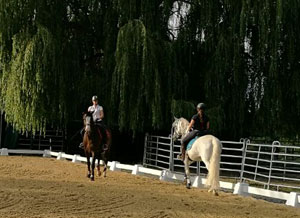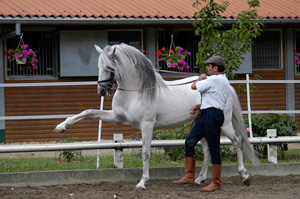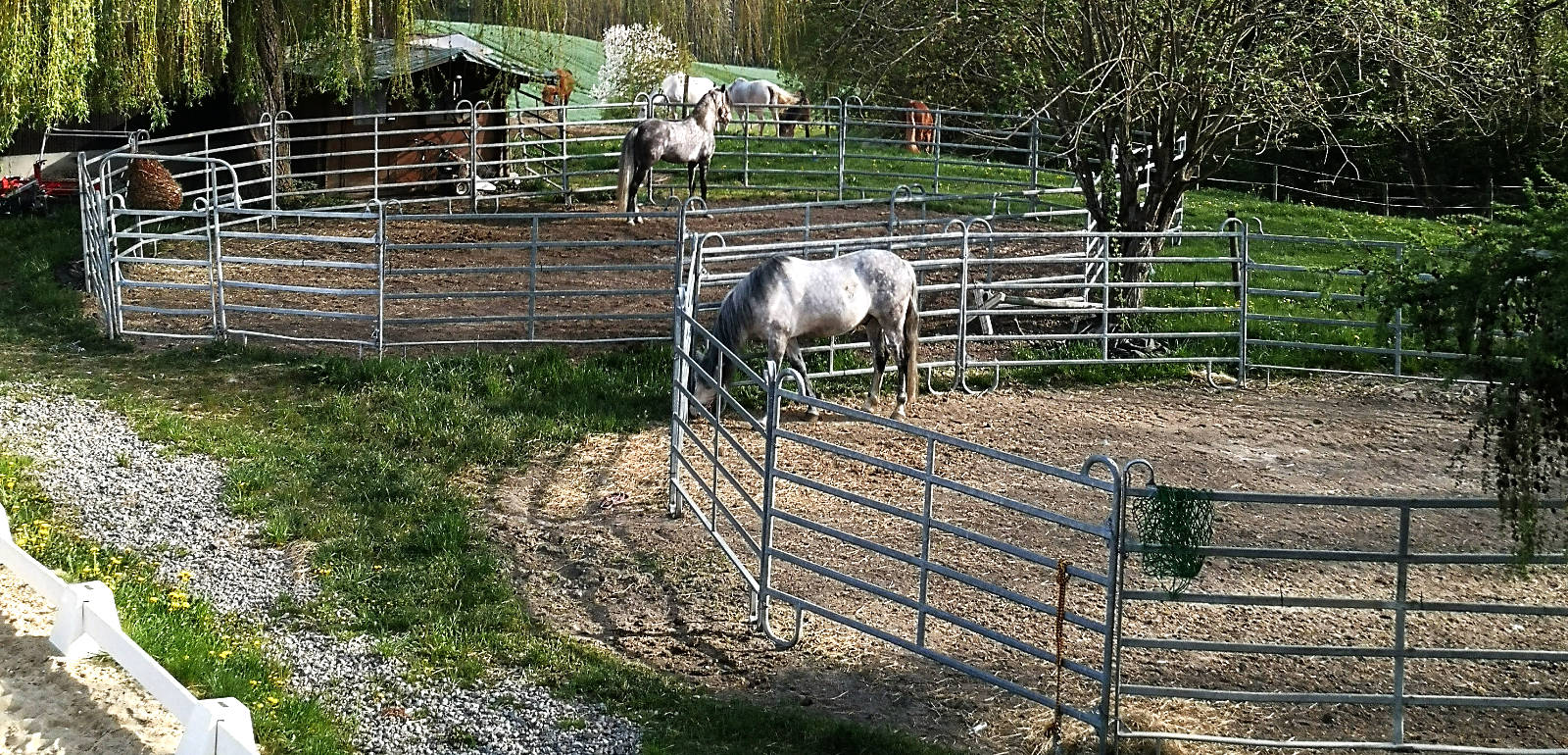Education, courses & services
Training for the rider
 The knowledge of old French riding masters from Pluvinel to Gueriniere, the school of lightness from Baucher to Oliveira form the foundation of the training.
The knowledge of old French riding masters from Pluvinel to Gueriniere, the school of lightness from Baucher to Oliveira form the foundation of the training.
Riding out of impulses instead of power.
Serenity from secure balance and communication through body language. Harmony through knowledge, respect and understanding.
The coordination of the aids is trained successfully. The correct breathing technique is used as well as the visualization effect.
The links or. Right-handedness of the rider is integrated into the leaning therapy (straightening) for horse and rider.
Auxiliary reins and special bits are not used.
A particular role model in the training and promotion of the riding students and horses entrusted to me was and is, in particular, the riding art and philosophy of my teacher NUNO OLIVEIRA:
“Dressage as a search for harmony, lightness and roundness. Riding is not an act of strength, but an expression of dance elegance. "
All year round, 3-day introductory courses are offered, which include horse riding in theory and practice and training in fine-tuning. This is followed by 5-day courses that expand basic knowledge and skills and work on special topics.
You can bring your own horses. The lessons take place individually. Additional or regularly requested private lessons can also be booked.
Riders with gaited horses and horses from other riding styles (westerns) also successfully take part in our programs.
Training for the horse
 Training and courses The training includes the basic and development work of young horses and the promotion of talented horses up to the lessons of the high school.
Training and courses The training includes the basic and development work of young horses and the promotion of talented horses up to the lessons of the high school.
Sensitive correction of problem horses with the involvement of their owners. Because mostly the horse has a problem with its rider, not the other way around.
Exercises and lessons are worked out in order to continue and deepen what has been achieved at home.
The riding also includes horse breeds other than baroque.
Courses and topics of our courses
- Sitting training to develop the deep academic seat, as the key to perfect balance, coordination and a fine hand.
- Knowledge of the biomechanics and anatomy of the horse for a better understanding of the processes involved in riding.
- Psychological aspects of riding: Type recognition and the psyche of the horse determine the training path.
- School of rein and thigh aids, prerequisite for fine-tuning the aids.
- Back training with cavesson on the lunge.
- Dynamic lunging.
- Bodywork on the horse. Mobilization and stretching to release blockages.
- Gymnastic floor work. Fine-tune the horse for touch signals and body language. Establishing trust and respect.
- Work on hand. Fine-tune the horse for voice, touch and body signals. Preparation for the lessons under the saddle.
- Side Bend Lessons (work on 1 and 2 hoof strokes)
- Lessons on longitudinal bending (transitions, backward straightening, swing)
- Learning the Baucher principle: "Hand without a thigh, a thigh without a hand" to learn the whole and half parade with ease.
- Paths to Symmetry (Leaning Therapy)
- Correction of problems and blockages in horse and rider
- Work on the assembly
- Development of individual high school lessons (Alta Escuela)
- Paths to lightness according to Nuno Oliveira
Animal healing methods
Leech Therapy
- for lameness, tendinitis / tendovaginitis, arthrosis, strained ligaments, poor wound healing, eczema of all kinds, postoperative scarring and abscesses
Acupressure treatment
- for muscle tension
for pain therapy
Phytotherapy (herbal medicine)
- for internal and external use
independent professional feed advice
- Feed type determination
- Compilation of feed type and ration
EQUISCAN® horse and saddle measurement
- Saddle adjustment
- Saddle advice
Rehabilitation training according to the medical riding teaching MRS® according to Dr. Stodulka
- Horses after injuries
- OPs
- Accidents
- Compulsory breaks
- in convalescence
- Old horses
- Horses with rideability problems

